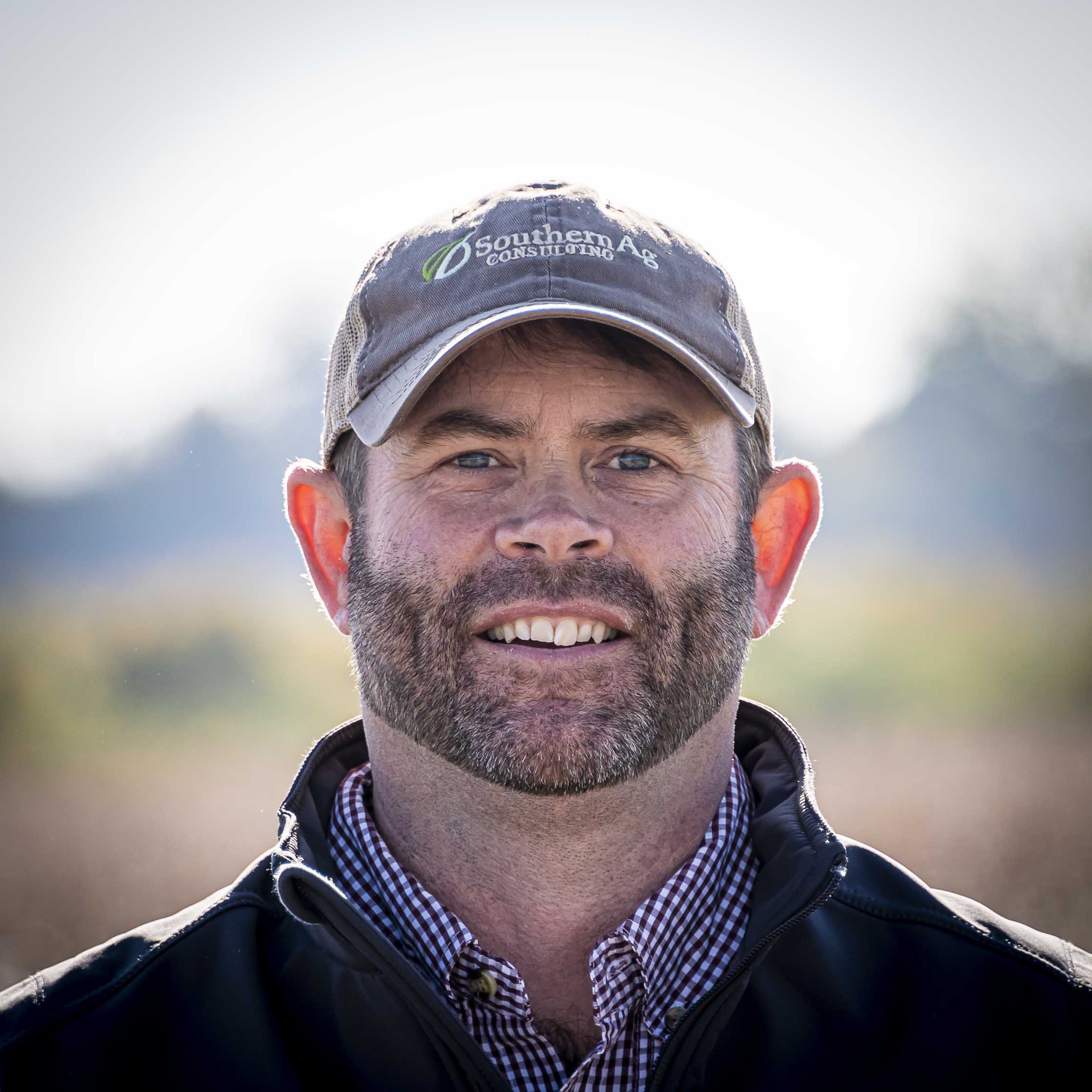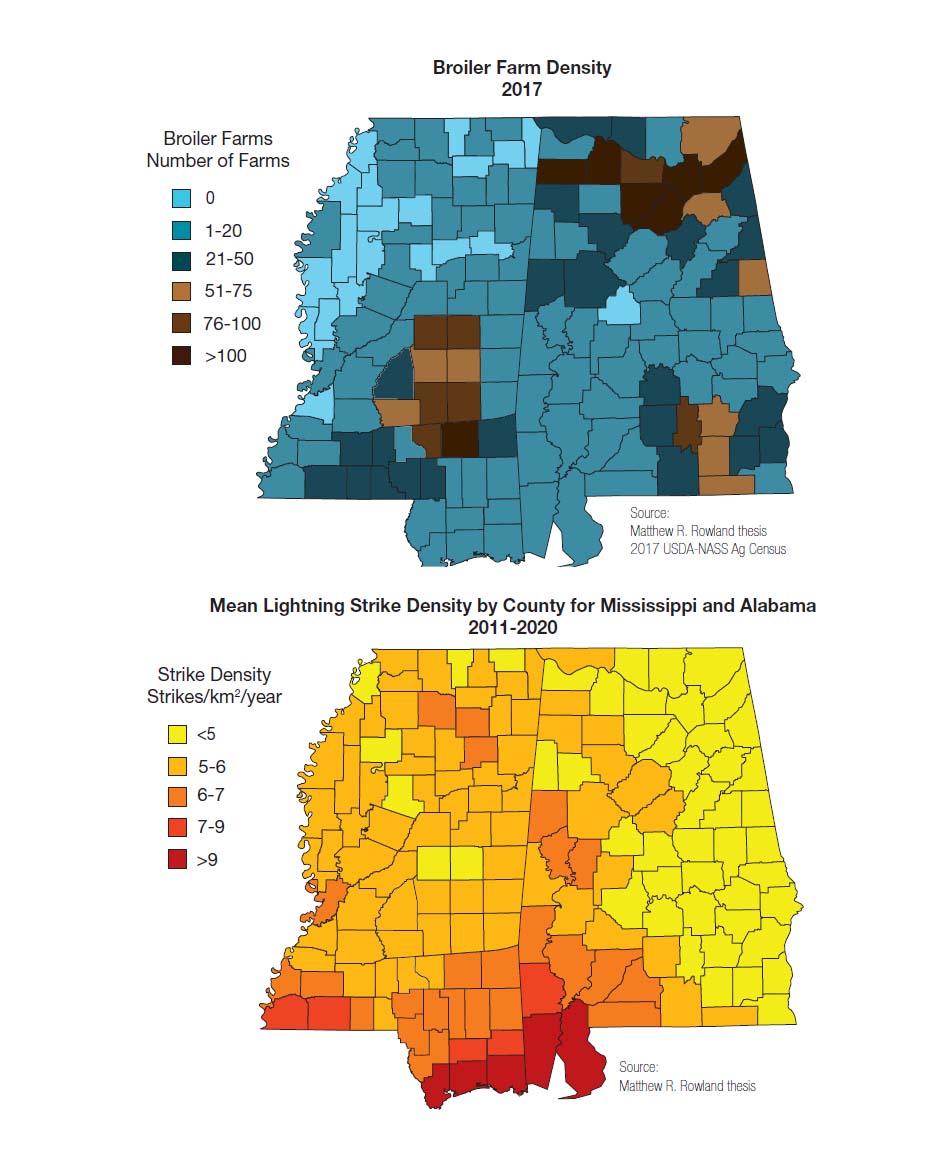Safe from the Storm
MAFES scientists work to keep poultry houses safe during severe weather events
By: Sam Hughes
The information presented on this page may be dated. It may refer to situations which have changed or people who are no longer affiliated with the university. It is archived as part of Mississippi State University's history.
On a steamy summer night, winds howl, straining the metal siding of a broiler house as rain thunders against its roof. The ventilation system drones as dim lights shine on tens of thousands of chickens along the house's dusty interior.
A flash of light flares from underneath the barn door, thunder roaring as the house's lights flicker out. Massive fans slow as the ventilation system loses power. Thousands of birds sit in darkness, rapidly consuming a limited oxygen supply as the interior temperature rises. With environmental control systems offline, farmers could experience rapid losses.
Within moments of the outage, the backup generator kicks online, and the ventilation system hums back to life—but not all broiler houses are so lucky in the face of extreme weather. A series of tornadoes swept through southern Mississippi on Easter Sunday of 2020, damaging or destroying nearly 100 broiler houses.
Dr. Daniel Chesser, assistant professor in the Department of Agricultural and Biological Engineering and Mississippi Agricultural and Forestry Experiment Station (MAFES) scientist, said as broiler houses increase automation, costs of construction, maintenance, and insurance also increase, as well as their susceptibility to lightning damage.
Mississippi State University (MSU) alumnus Matthew Rowland collaborated with Chesser on two studies investigating the risk lightning poses to the industry for his master's thesis. In one study, Chesser and Rowland built a comprehensive lightning strike density map of Alabama and Mississippi using historical data furnished from VAISALA's National Lightning Detection Network.
"One goal of this research was to understand the lightning patterns from a geographic standpoint, and from a temporal standpoint throughout the year. We wanted a better understanding of what geographic areas experience the most lightning, and what areas are at higher or lower risk depending on the time of day and year," Chesser said. "That's important for insurance companies when performing risk analysis and determining insurance premiums."
The lightning mapping study found that more than 50% of annual lightning strikes occur during the summer, and that they were more common at night. Coastal regions experience increased lightning strikes, and as Mississippi's broiler farm density is elevated in the central-southern area of the state, these farms face an enhanced risk of lightning strikes.
Increased payouts due to extreme weather events and overall economic uncertainty have caused insurance companies to charge higher premiums to reduce their economic risk. MAFES scientists found that 40 percent of chicken growers reported a premium increase of 10 percent or higher, and some insurers have refused to issue policies for broiler production.
Chesser said that technology in precision agriculture and precision livestock management is rapidly advancing, with new artificial intelligence, robotics, and automated systems being developed. Responsible management could prevent damage to these emerging and expensive technologies.
"The more electronic, automated systems we incorporate into the production process, the more important it's going to be to properly ground these systems," Chesser said. "We can't really prevent the lightning, but there are things we can do—like proper grounding systems and annual inspections—to mitigate the damage should a strike occur."
If a broiler house is equipped with a proper grounding system, in the event of a lightning strike, excess voltage passes through the grounding system and into the earth. If the grounding system is not fully functional, this excess voltage could escape to the earth through digital controllers, electric motors or other electrical equipment, causing heavy damage.
To fully understand the vulnerabilities of Mississippi poultry producers, Rowland and Chesser, working with colleagues from Auburn University and USDA Agricultural Research Service's Poultry Research Unit conducted a field survey of grounding systems in Mississippi and Alabama.
Ninety-six broiler houses across 14 farms were visited to collect data on house age, grounding system type, and earth ground resistance—a measure of how effective the systems were at diverting voltage.
"We wanted a current snapshot of how growers are protecting their operations. Over 65% of houses were up to code—and that's fantastic. Farmers are being proactive in protecting their investments," Rowland said.
"One grower was telling us how his operation had upgraded his control systems on his farm in recent years. If lightning knocks out those control systems, you have to act quickly to keep the birds alive."
Rowland emphasized the importance of annual inspections, especially before the summer months. If connections are loose or corroded, grounding systems could prove ineffective when lightning strikes.
In the wake of the lightning strike modeling research, the MSU Department of Agricultural and Biological Engineering is working on using data from the National Oceanic and Atmospheric Administration and the Iowa Environmental Mesonet to create an extreme weather climate model to evaluate extreme weather event frequency and impact on housing design requirements for U.S. broiler producing regions.
"Once we complete this database, we'll be able to see where and how severe weather events affect the resiliency of agricultural production systems across the U.S. Heat advisories, cold advisories, snowstorms, tornadoes, hurricanes—any type of severe weather event we might encounter," Chesser said. "We can try and determine the probabilities of how extreme weather events might negatively affect agricultural producers across the U.S."
As precision livestock management grows within the broiler industry, MAFES researchers are at the forefront, gathering real data to support improved industry management practices that will keep the lights on in broiler houses across the nation.
"Poultry is a protein that's continuing to increase in consumption in the U.S., and worldwide," Chesser said. "As a land grant institution, the focus of our research is to help the producer, to help the industry grow and become more profitable."
This research is funded by the USDA Agricultural Research Service's Poultry Research Unit. MAFES scientists work closely with USDA-ARS scientists to improve productivity and profitability of Mississippi's poultry industry.
Once we complete this database, we'll be able to see where and how severe weather events affect the resiliency of agriculture production systems across the U.S....We can try and determine the probabilities of how extreme weather events might negatively affect agriculture producers..
Dr. Daniel Chesser
Behind the Science

Daniel Chesser
Assistant Professor
Education: B.S., Agricultural Engineering, Technology, and Business; M.S., Ph.D., Agricultural Science, Mississippi State University
Years At MSU: 24
Focus: Enhancing production and optimizing resource utilization in both agricultural and environmental systems through the development and application of integrated data-driven solutions, supportive tools, and precision agricultural technologies.
Passion At Work: My passion is improving sustainability and production efficiencies of cropping systems through the development of applied engineering and technology solutions that foster environmental stewardship and positively impact economic returns for farmers and industry alike.


